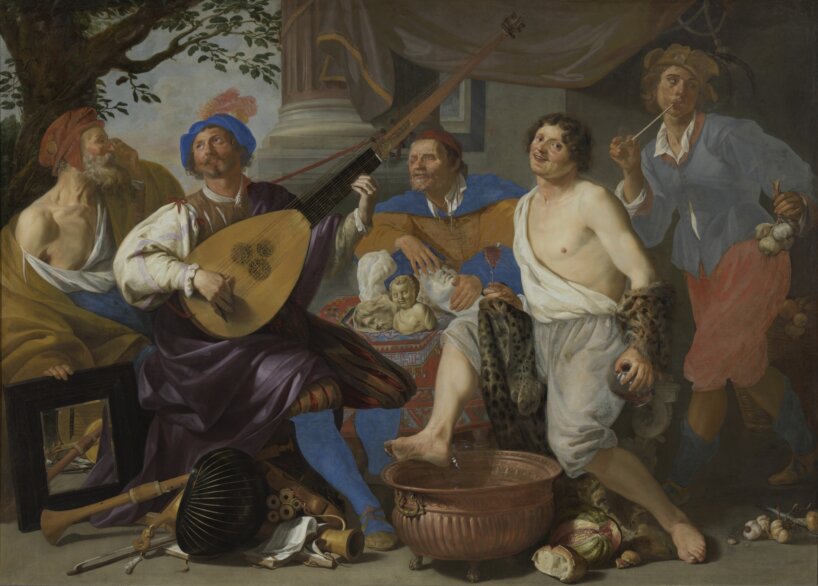Rombouts enjoyed a solid reputation in the art circles of Antwerp. After studying with Abraham Janssen (ca. 1575-1632), he travelled to Italy in the early 17th century, finding inspiration there in the work of the revolutionary painter Michelangelo Merisi da Caravaggio (1571-1610) and his most important successor, Bartolomeo Manfredi (1582-1622). On his return to Antwerp, Rombouts developed an entirely unique artistic identity that combined Northern and Southern European influences. His monumentally large genre paintings earned him success as a Caravaggist painter of the human figure in particular. But as much as his work was admired during his lifetime, just as quickly was his artistic legacy forgotten after his death. This exhibition aims to shine a new light on Rombouts’ personality as an artist, and to open up fresh perspectives on his work.
The Allegory of the Five Senses is undoubtedly the greatest showcase for Rombouts’ virtuosity. He was commissioned to paint it in 1632 by his patron, the bishop Antoon Triest (1577-1657), and it was sure to have been a highlight of the bishop’s enormous collection of art. In the scene, one of the few allegorical works in Rombouts’ oeuvre, five rather common-looking male figures represent the five senses. On the left, an older man with a pince-nez and a mirror is sight; a musician playing a theorbo, gaze turned upwards, is hearing. The central figure is a blind man representing touch, his hands on a piece of antique sculpture. The man with the half-exposed torso, holding a glass of wine in one hand and a carafe in the other, is taste, while the standing figure on the right, with his pipe and bunch of garlic, is clearly scent.



